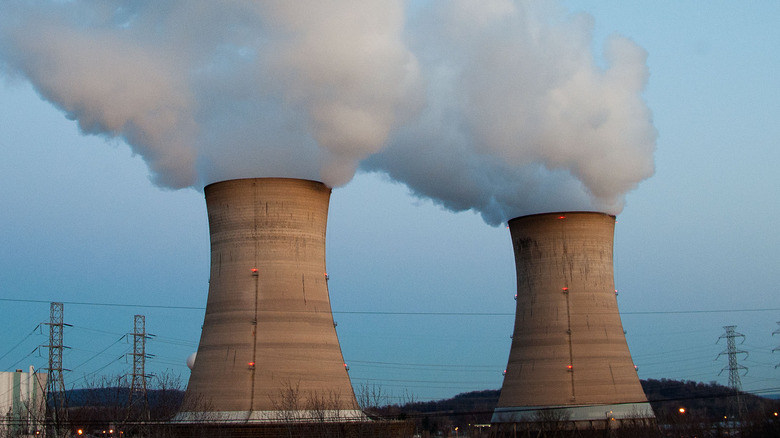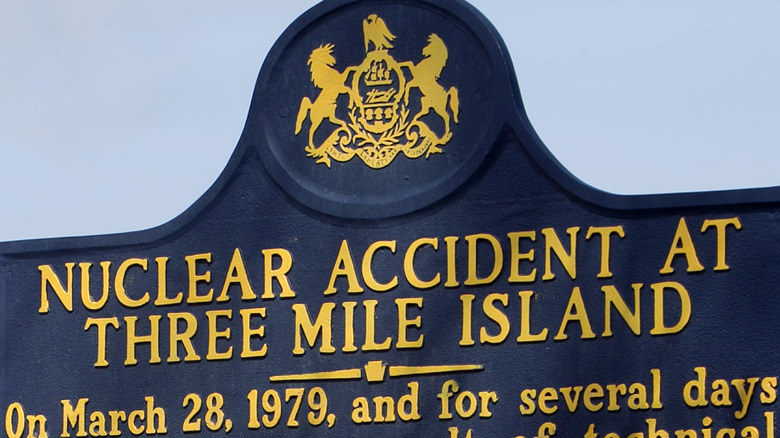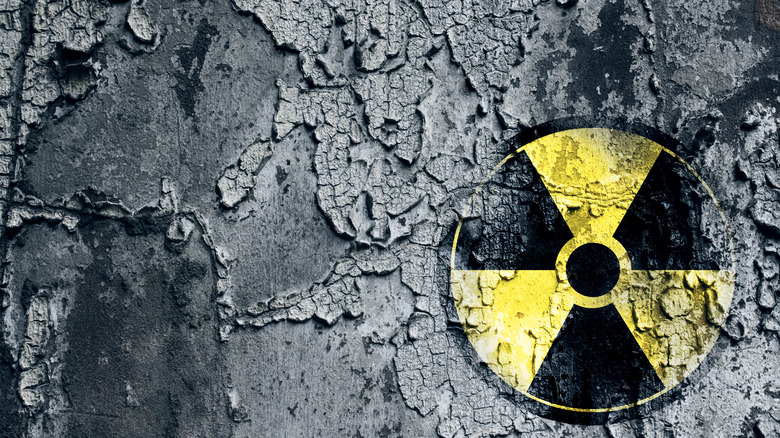How One Wrong Assumption Caused The Three Mile Island Meltdown
Most of us are familiar with the infamous and devastating nuclear meltdown of Chernobyl in 1986. In the nocturnal hours between April 25th and 26th, a series of miscalculations and irreversible mistakes made by power plant personnel resulted in a total malfunction and subsequent explosion of the facility. In the aftermath, a staggering amount of toxic radioactive material reached the atmosphere and spread across the Russian territory for miles, affecting countless lives and forcing citizens from their homes. Britannica reports that 50 to 185 million curies of radionuclides shot skyward into the atmosphere and traveled as far as France and Italy.
Not even the harrowing events of Hiroshima and Nagasaki over 40 years earlier, when the United States dropped atomic bombs on Japan, reached such crippling scientific numbers. Many of those who were in the region at the time of the explosion experienced long-term health defects from widespread contamination and, after the vicious damage was done, were never able to return home. To this day, it still stands as the worst nuclear disaster on record.
Some might not know that on the other side of the world, The United States also experienced its own nuclear debacle nine years earlier that was very similar — though far less devastating — to the events that took place in Chernobyl in April of 1986. In 1979, the Three Mile Island nuclear power plant underwent a total nuclear meltdown as a result of a simple erroneous assumption gone awry (via World Nuclear Association).
What happened that led to the meltdown
Officially, it was a cooling meltdown that led to the incident at Three Mile Island near Harrisburg, Pennsylvania at 4 a.m. on March 28, 1979. It all started after a pressure valve in the Unit-2 reactor didn't close when it was supposed to. As a result, large amounts of water meant to cool down the reactor became contaminated with radioactive material and started spreading to different parts of the facility (per History).
The reactor's internal temperature of its primary coolant started to rise exponentially. At first, disaster wasn't imminent because the pressure valve's failure to close would have been essentially fixed by the system's natural correction process of shutting down and cooling itself off. However, it was human error that compounded the severity of the problem, and without certain hasty intervention methods carried out by experts working at the facility, there's a good chance things wouldn't have happened the way they did (via World Nuclear Association).
Human error caused the Three Mile Island meltdown
Had the automatic cooling systems put in place been left to work on their own, the meltdown at Three Mile Island may not have happened at all. Nonetheless, the pressure was on (no pun intended) for those operators working in the control room, so they had to think fast. Things can easily go wrong in instances of such strenuous tension, and in this case, they did. In an effort to prevent what they thought would be made worse by the emergency cooling system, they shut it down entirely and the reactor's core was well on its way to overheating as a result (per History).
Long story short, a conglomeration of condensed overheated space within the core trapped an abundance of radioactive gas and created a hydrogen bubble. Through the process of attrition and methodical care, scientists cautiously managed to deflate and diffuse the hydrogen bubble over the course of a few days, though some of the radioactive air did reach the atmosphere in the process. Luckily, there were no serious ramifications to the Three Mile Island meltdown and nobody suffered any health issues after the fact (via World Nuclear Association).


